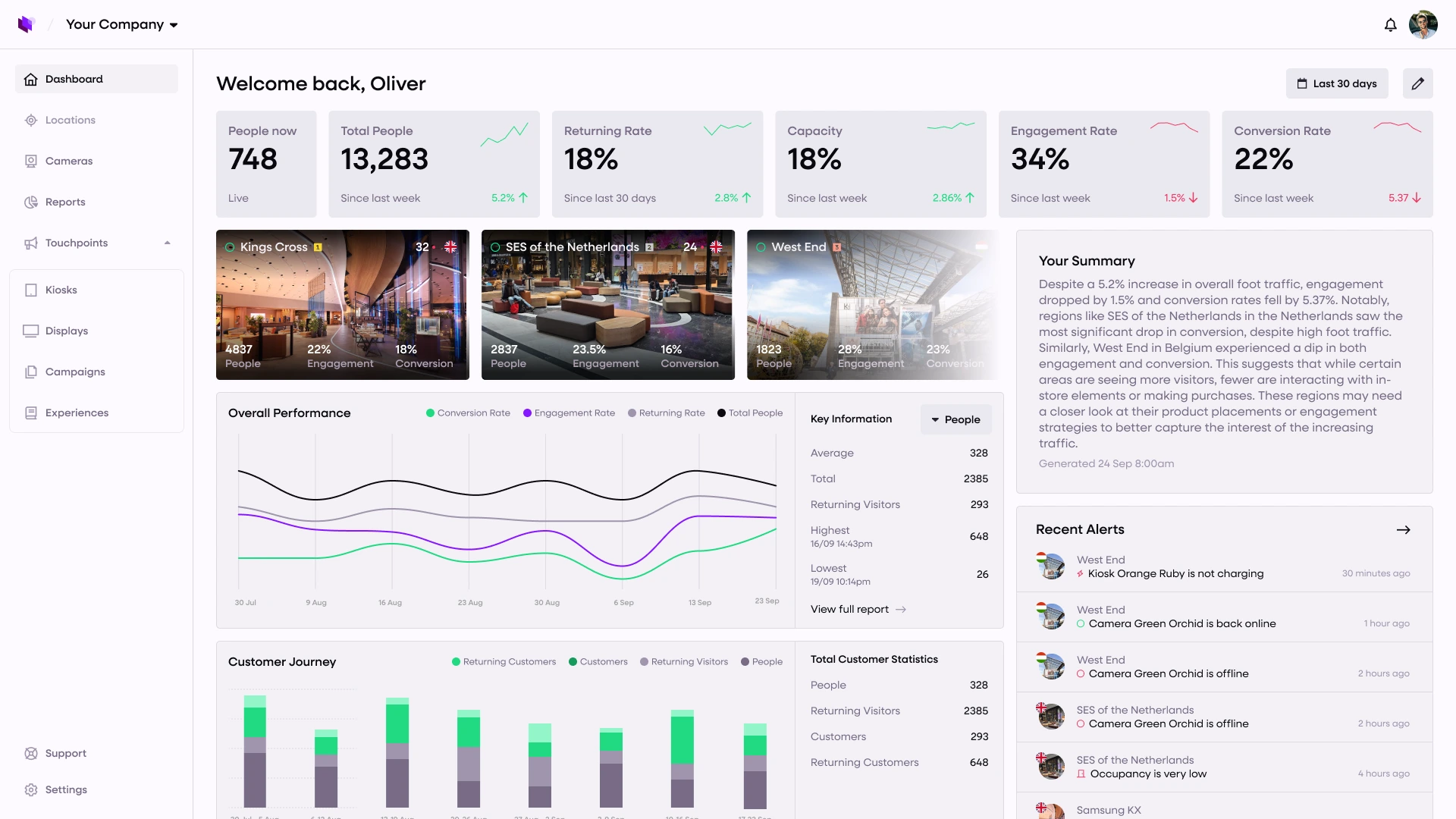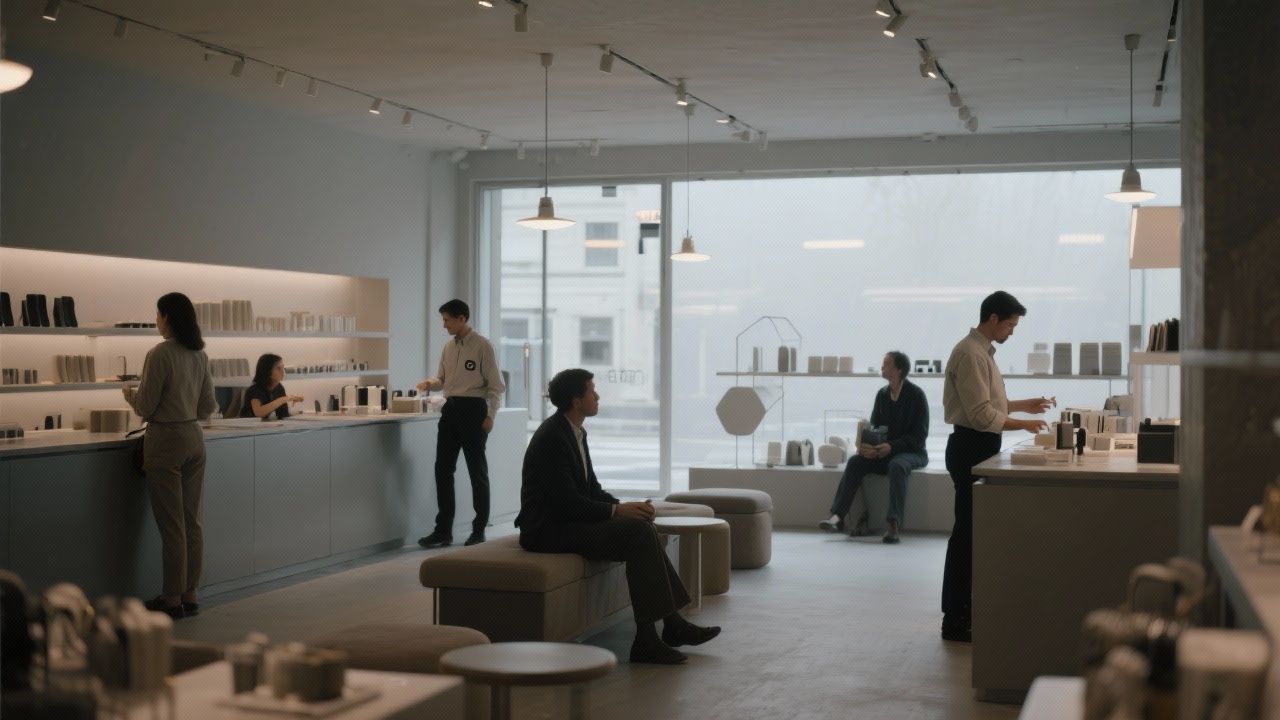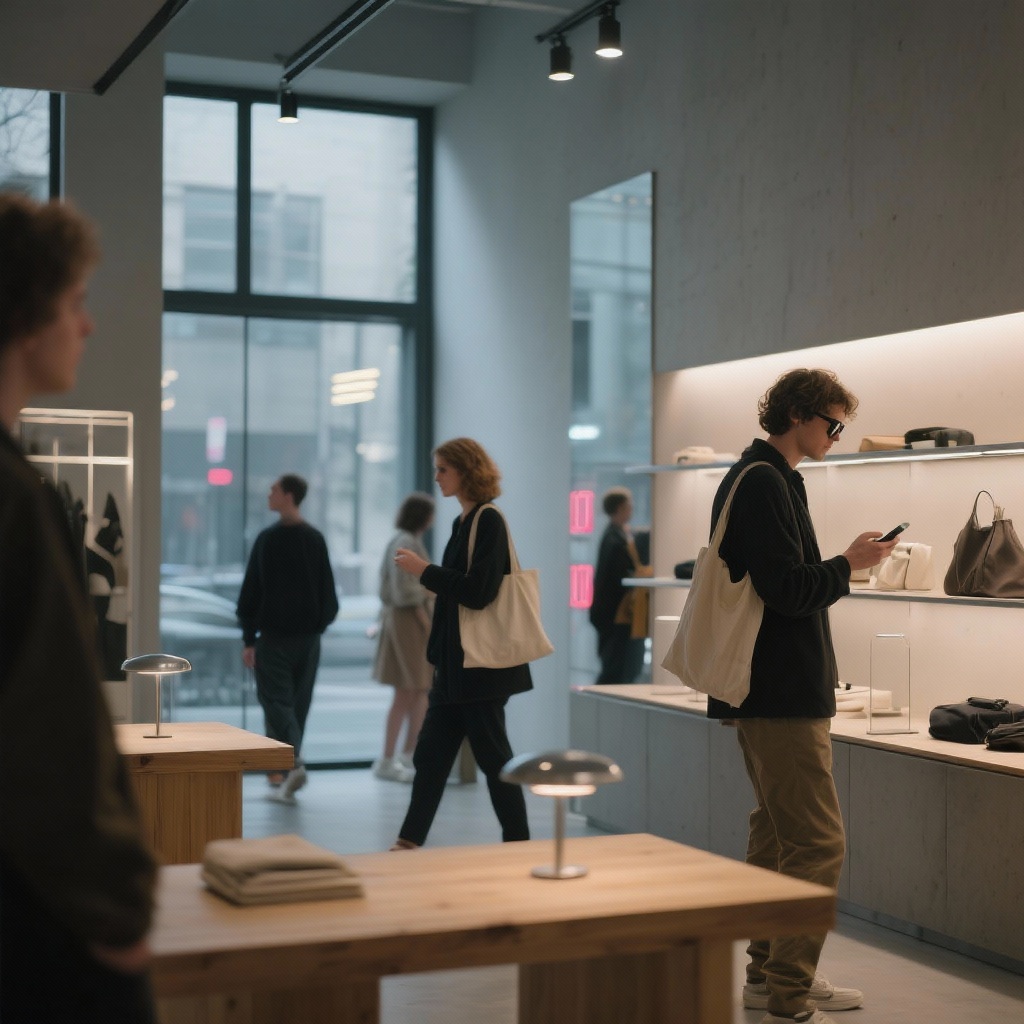


Reach out to us!
Start your AI journey today and let us help you understand your business better. Send us an email or book a meeting with one click!


Reach out to us!
Start your AI journey today and let us help you understand your business better. Send us an email or book a meeting with one click!
10th November 2025

Leo
We live in an era obsessed with the next breakthrough device or algorithm, yet much of our daily life is still shaped by something more subtle: the spaces we occupy. The way a hotel lobby makes you feel welcomed, how a grocery store guides you effortlessly from aisle to aisle, or how an office invites collaboration – these experiences start with design.
Experience design is the craft of creating environments that not only look good but also feel right. It combines architectural choices, lighting, colour, flow and a growing body of behavioural science to shape how people move, linger and remember.
Physical commerce remains incredibly important; the World Green Building Council notes that improvements in store environments influence dwell time, which in turn drives sales. As more businesses compete to lure people back to physical spaces after years of digital acceleration, investing in thoughtful design becomes a strategic imperative, not a vanity project.
In the digital world, user experience (UX) is crucial to how we interact with apps and websites. In the physical world, experience design plays a similar role. It is the deliberate orchestration of sensory cues and spatial arrangements that guide how people use a space.
Colour, acoustics and temperature influence comfort and mood; circulation patterns influence whether visitors feel hurried or relaxed.
Experience design blends artistry with data: heat maps show where people gather; sensor data reveals how long they dwell; feedback surveys capture how they felt. When designers combine those insights with empathy, they create environments that anticipate human needs rather than forcing people to adapt to their surroundings.
Researchers have long studied how sensory cues affect our behaviour. A peer‑reviewed study in Frontiers in Psychology explored how colour and light influence perceptions of luxury and time spent looking at images of interior spaces.
Participants lingered longer on scenes they rated as more luxurious, and researchers found a positive correlation between dwell time and the feeling that a space was comfortable or desirable. In other words, when a room looks and feels refined, people instinctively slow down and savour it.
Retailers and hospitality operators have long intuited this relationship. They use warm colours, soft textures and curated lighting to create a sense of ease. But the science offers evidence that these efforts work. If an environment feels hurried or harsh, visitors naturally cut their stay short. If it feels warm and inviting, they linger – and that added time translates into greater engagement and, often, higher spend.

Few elements influence mood as profoundly as light. The landmark Skylighting and Retail Sales study by the Heschong Mahone Group analysed more than 100 big‑box stores and found that those with skylights experienced sales gains of 31–49 %, with an average improvement of about 40 %. The researchers concluded that daylight was one of the strongest predictors of retail performance.
Beyond sales, employees working in naturally lit stores reported higher satisfaction than those working under electric lighting. Another analysis of nature-loving design (incorporating natural elements) observed that profits per square metre from increased sales far outweighed the energy savings that skylights provided. Taken together, these studies show that daylight is not merely a nice‑to‑have – it is a powerful driver of both revenue and wellbeing.
Bringing nature indoors goes beyond skylights. Plants, natural materials and views of greenery calm the nervous system and invite people to linger. eco-friendly design has gained traction because it appeals to an innate preference for natural settings. When we see natural textures and patterns, our stress levels drop; we feel more grounded. Retailers who incorporate greenery and natural light into their stores often report higher customer satisfaction and longer visits, which reinforces the evidence that wellbeing and business outcomes are intertwined.
Experience design is not about replacing creativity with spreadsheets. Instead, data acts as a trusted partner that validates or challenges intuition. For example, sensors and analytics can reveal how long people stay in certain areas of a store or lobby. Insights like these can inform layout changes. The World Green Building Council cites research by Path Intelligence showing that a 1 % increase in dwell time can translate into a 1.3 % increase in sales. Armed with such data, managers can justify investments in comfortable seating, clear signage or calming background music because they can link these changes to measurable returns.
Data also highlights the human impact of design. At Marks & Spencer’s Cheshire Oaks store in the UK, improvements to daylighting and airflow were followed by a 22 % increase in employee satisfaction. Happier staff tend to provide better customer service, which in turn feeds back into sales and loyalty. This virtuous cycle illustrates how environmental improvements cascade through the entire business.
Predictive analytics (for example, in supply chains and staffing) can also support experience design by ensuring that the right products and people are available at the right times. McKinsey reports that 83 % of consumers expect personalisation in their shopping experiences, and effective personalisation can raise store revenues by 20–30 %. When analytics are integrated with design, retailers can tailor displays or services based on anticipated demand without resorting to generic, one‑size‑fits‑all layouts.
Great spaces are memorable because they make us feel something. A cosy bookshop, a serene spa or a bustling food hall all evoke distinct emotions through their design. These feelings form part of a customer’s memory and influence whether they return. Thoughtful experience design balances stimulation with calm: open view that invite exploration, intimate corners that offer privacy, and way finding cues that make navigation effortless.
Inclusivity must be part of this design ethic. Clear signage, accessible ramps and intuitive layouts make spaces welcoming to people of all abilities. When design lowers barriers, it not only meets regulatory requirements but also expands the potential audience. Thoughtful details such as seating designed for older visitors or quiet zones for neurodiverse guests communicate respect and care.
Warm environment with gentle lighting design

As technology advances, spaces will become more adaptive. Sensors will monitor air quality, sound levels and occupancy in real time, automatically adjusting ventilation and lighting to maintain comfort. Mobile apps may let shoppers summon assistance to a specific aisle or allow guests to customise their hotel room’s ambience. Yet the essence of good design will remain human. People still want to feel the warmth of natural light and the welcome of a thoughtful layout.
Sustainability will also shape the next era of design. Designers will continue to reduce energy consumption through daylighting, smart shading and efficient climate control. Adaptive reuse of buildings, modular furniture and renewable materials will be prioritised. These choices not only serve the planet but also enhance the story of a space; environments that reflect a commitment to sustainability resonate with customers who value responsible brands.
Designing smarter spaces is not about installing the most sensors or adding digital screens everywhere. It is about crafting environments that align with human instincts and aspirations. Research shows that people spend more time and feel more satisfied in spaces that are luxurious and comfortable; that daylight can boost retail sales by nearly 40 %; and that even small increases in dwell time can lift revenue. The businesses that thrive will be those that blend these insights with empathy, creating places where people feel cared for.
At Merlin Cloud, we believe that experience design is as much about listening to people as it is about interpreting data. By combining natural light, welcoming materials and intelligent analytics, any space – retail, hotel, office or beyond – can be transformed into a destination that people choose not just because they have to, but because they want to. The smartest spaces are the ones that feel so right you barely notice how smart they are. Learn more about how Merlin Cloud can help during the Journey at merlincloud.ai